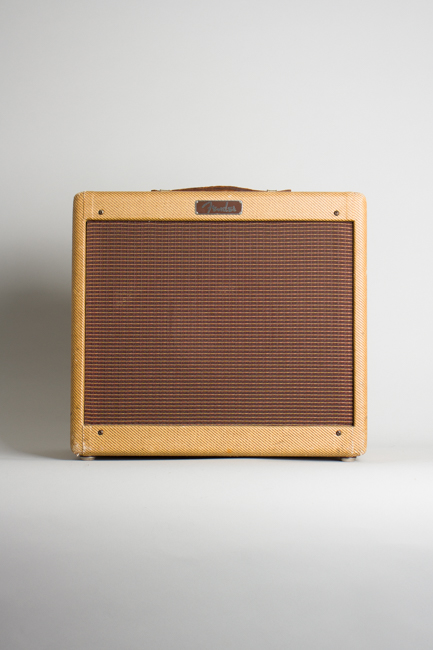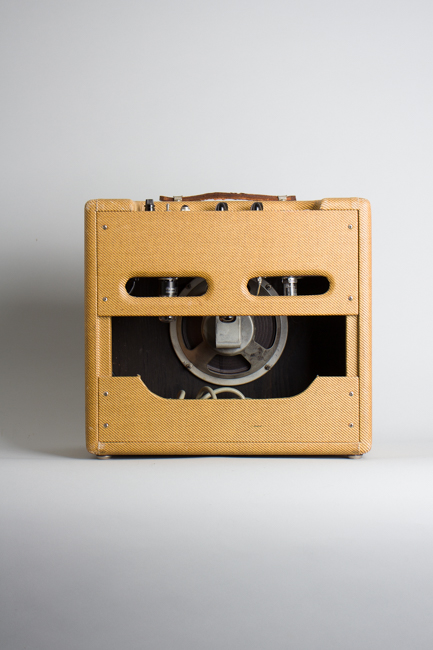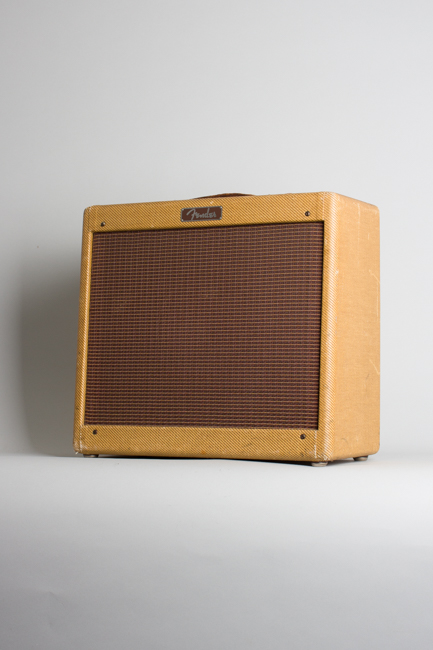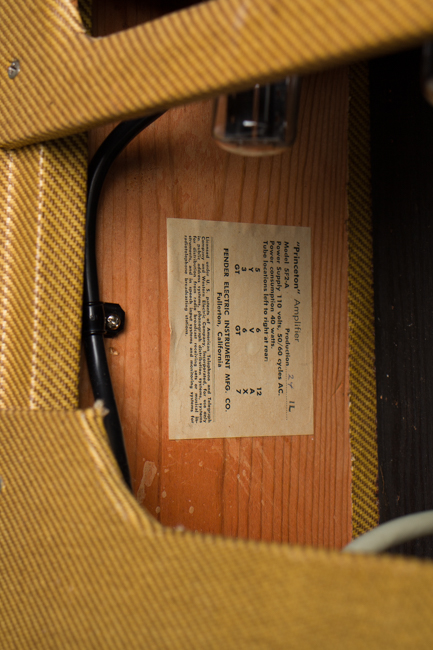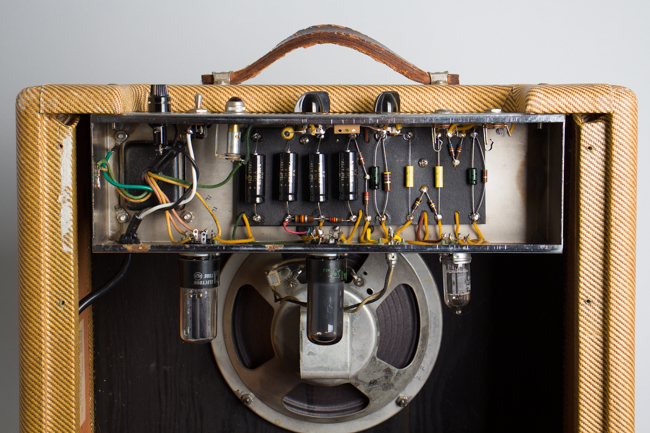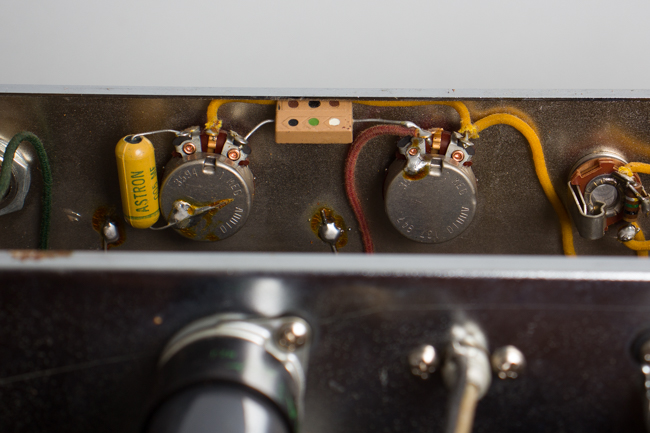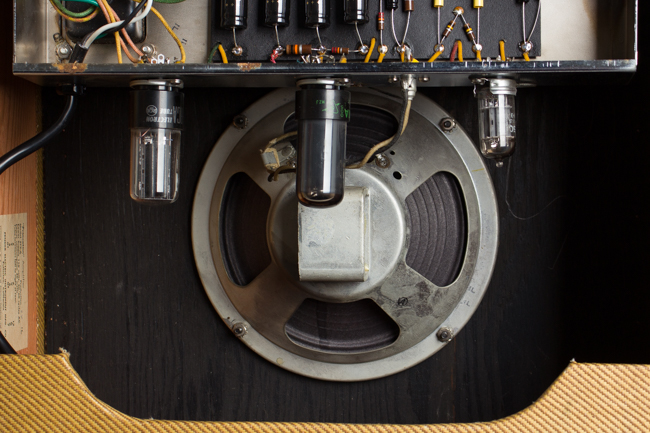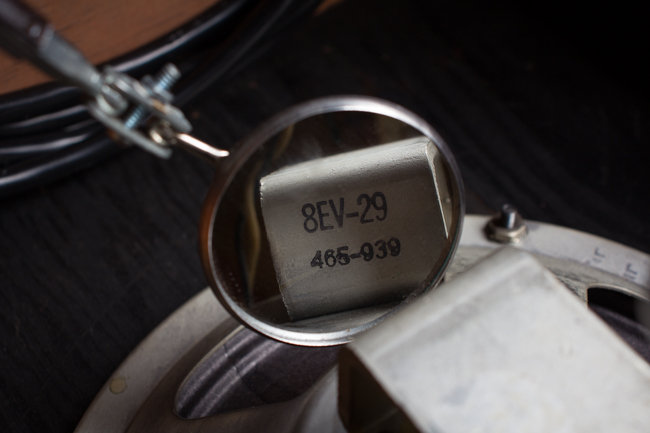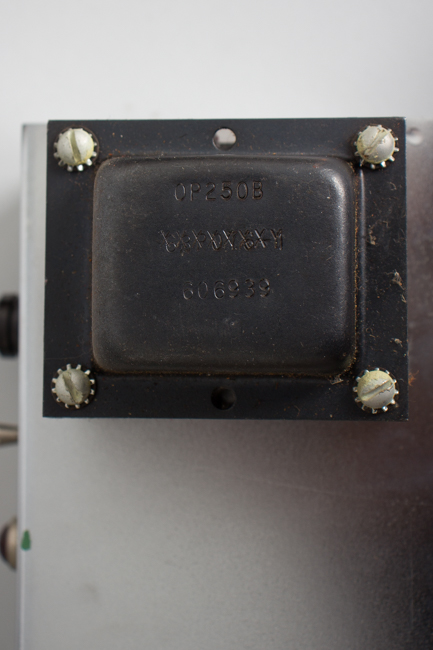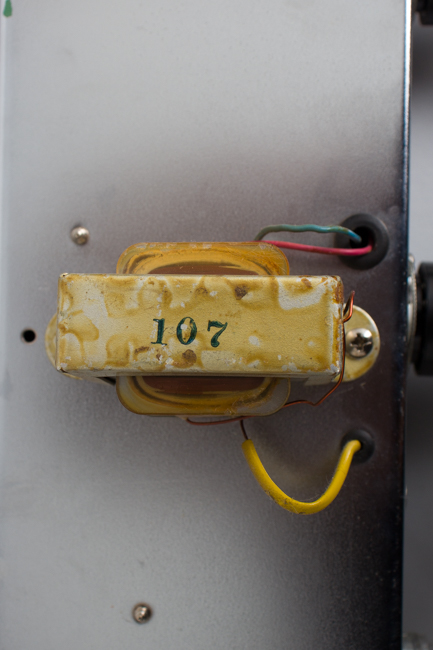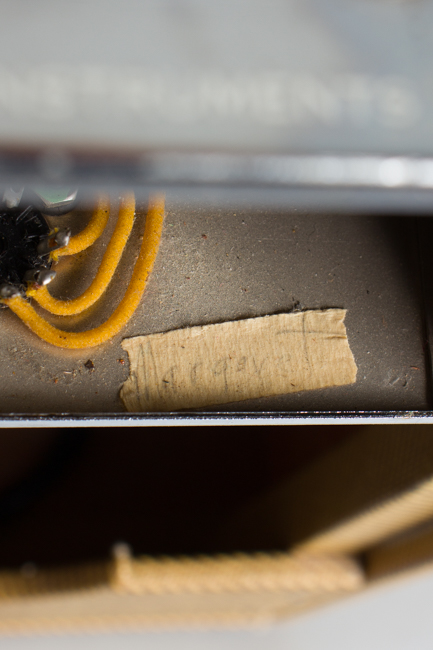Fender Princeton 5F2-A Tube Amplifier (1959)
This item has been sold.
Item # 11433
Prices subject to change without notice.
Fender Princeton 5F2-A Model Tube Amplifier (1959), made in Fullerton, California, tweed fabric covering finish.
This is a really nice example of the rare and very desirable late-'50s big-box Princeton, which by this point had grown into a much larger unit than its earlier ancestors. Still intended as a student amplifier (hence the academic name!) the later 'big-box' 5F2 model is housed in a more spacious Harvard-sized cabinet making for a sweetly overdriven airier tone that can get very raucous when pushed.
The tube chart in this cabinet is ink-stamped with the code "IL", indicating assembly in December of 1959. This Princeton features a single 8" speaker driven by a circuit very similar to a 5F1 Champ with a tone control added. The single-ended 6V6 power section puts out around 5-6 watts of power, plenty for burning up most recording sessions without making the walls rattle!
Height is 17 in. (43.2 cm.), 18 in. (45.7 cm.) width, and 9 in. (22.9 cm.) in depth at deepest point.
Cosmetically, this is a very nice example overall. The tweed covering is beautifully preserved overall with only VERY minimal wear on some corners and edges. It bears a lighter amber patina and is free of any notable stains or cigarette burns. The grille cloth is in great shape as well. The chrome control plate is nearly mirror clean with virtually all the stenciled graphics intact. The original leather handle is also intact and has plenty life left in it. The handle hardware shows light amounts of corrosion.
Electrically, the amp is nicely original. It was originally wired up by Margaret and bears her signature on a piece of masking tape inside the chassis. The speaker is the original 8-EV29 Oxford, marked 465-939, dating it to the 39th week of 1959. Both the power and output transformers are original as well and marked 606-939 and #107, respectively, the former dating to the 39th week of 1959 as well. Visible pot code dates to the 47th week of 1959. The amp has received our typical maintenance and servicing consisting of replacement of all electrolytic caps, a grounded 3-prong power cord, cleaning of all sockets, pots and jacks as well as biasing to spec.
Overall this is a superb amplifier, sweetly purring at low volume and turning into a very hot little number when the twin chicken heads are rolled up! Overall Excellent Condition.
This is a really nice example of the rare and very desirable late-'50s big-box Princeton, which by this point had grown into a much larger unit than its earlier ancestors. Still intended as a student amplifier (hence the academic name!) the later 'big-box' 5F2 model is housed in a more spacious Harvard-sized cabinet making for a sweetly overdriven airier tone that can get very raucous when pushed.
The tube chart in this cabinet is ink-stamped with the code "IL", indicating assembly in December of 1959. This Princeton features a single 8" speaker driven by a circuit very similar to a 5F1 Champ with a tone control added. The single-ended 6V6 power section puts out around 5-6 watts of power, plenty for burning up most recording sessions without making the walls rattle!
Height is 17 in. (43.2 cm.), 18 in. (45.7 cm.) width, and 9 in. (22.9 cm.) in depth at deepest point.
Cosmetically, this is a very nice example overall. The tweed covering is beautifully preserved overall with only VERY minimal wear on some corners and edges. It bears a lighter amber patina and is free of any notable stains or cigarette burns. The grille cloth is in great shape as well. The chrome control plate is nearly mirror clean with virtually all the stenciled graphics intact. The original leather handle is also intact and has plenty life left in it. The handle hardware shows light amounts of corrosion.
Electrically, the amp is nicely original. It was originally wired up by Margaret and bears her signature on a piece of masking tape inside the chassis. The speaker is the original 8-EV29 Oxford, marked 465-939, dating it to the 39th week of 1959. Both the power and output transformers are original as well and marked 606-939 and #107, respectively, the former dating to the 39th week of 1959 as well. Visible pot code dates to the 47th week of 1959. The amp has received our typical maintenance and servicing consisting of replacement of all electrolytic caps, a grounded 3-prong power cord, cleaning of all sockets, pots and jacks as well as biasing to spec.
Overall this is a superb amplifier, sweetly purring at low volume and turning into a very hot little number when the twin chicken heads are rolled up! Overall Excellent Condition.
